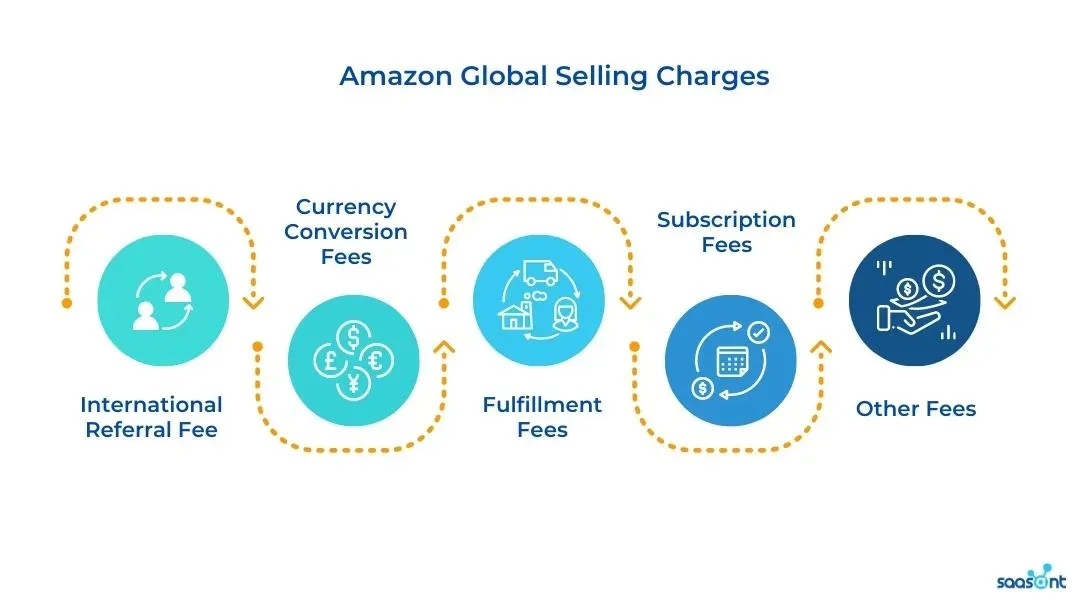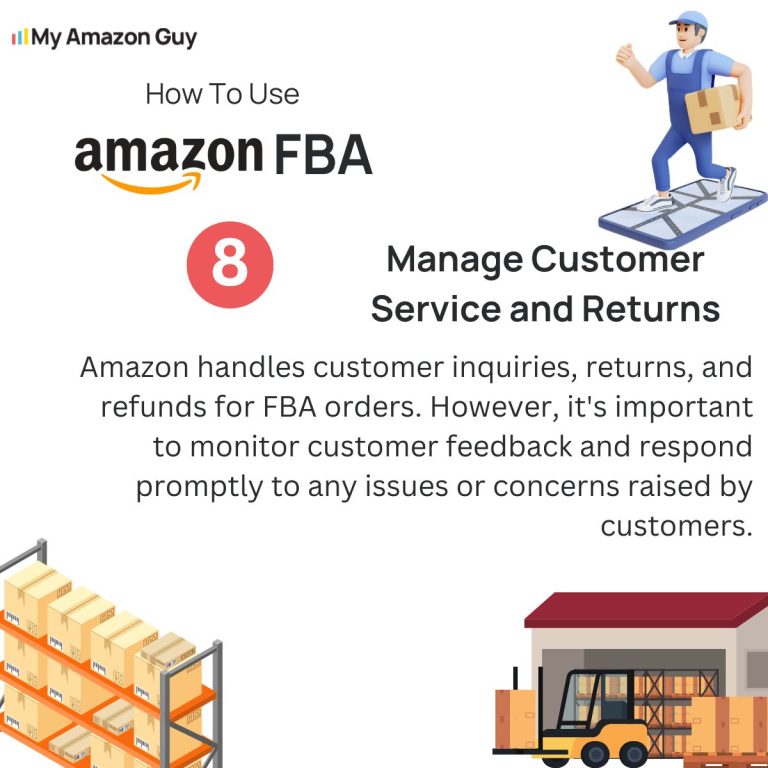Unlock the secrets to maximizing profits with Amazon FBA fees – learn how to optimize your strategy and boost revenue!
Table of Contents
- Introduction to Amazon FBA
- Understanding Amazon FBA Fees
- Calculating FBA Fees
- How to Save on Amazon FBA Fees
- Importance of Monitoring Amazon FBA Fees
- Case Studies: Success Stories with Amazon FBA
- Common Mistakes to Avoid with Amazon FBA Fees
- Maximizing Profitability with Smart Pricing
- Forecasting for the Future
- Conclusion: Navigating Amazon FBA Fees for Maximum Profit
- Frequently Asked Questions (FAQs)
Introduction to Amazon FBA
Have you ever wondered how people sell products online without having to deal with packaging and shipping? Well, that’s where Amazon FBA comes in! Let’s dive into what Amazon FBA is and how it can help you make money by selling things on the internet.
What is Amazon FBA?
Amazon FBA stands for Fulfillment by Amazon. It’s a program where you, as a seller, send your products to Amazon’s warehouses. Amazon takes care of storing your items, packaging them, and shipping them to customers when they order. This means you can focus on finding cool things to sell, while Amazon handles the nitty-gritty details of getting those products to your customers.
Benefits of Using Amazon FBA
There are some awesome advantages to using Amazon FBA. For starters, you don’t have to worry about storing products in your garage or living room – Amazon stores them for you. Plus, your items may be eligible for Prime shipping, which means they can get to customers faster. This can attract more shoppers to buy from you because they love that quick two-day shipping!
Understanding Amazon FBA Fees
When you use Amazon FBA to sell your products, there are various fees associated with the service. These fees can impact your profit margins, so it’s essential to understand what they are and how they can affect your business.
Types of Amazon FBA Fees
Amazon FBA fees can include storage fees, fulfillment fees, and long-term storage fees. Storage fees are charged for storing your products in Amazon’s fulfillment centers, while fulfillment fees cover the cost of picking, packing, and shipping your orders. Long-term storage fees are incurred if your products remain in storage for an extended period.
How Fees Affect Profits
These fees can eat into your profits if you’re not careful. It’s important to factor in these costs when pricing your products to ensure you’re making a profit after all fees are taken into account. Understanding how fees impact your bottom line is crucial for running a successful Amazon FBA business.
Calculating FBA Fees
Calculating your Amazon FBA fees is essential to understanding your costs and ensuring profitability. The Amazon FBA Calculator is a handy tool provided by Amazon that helps sellers estimate their fees before listing a product. All you need to do is input the product details such as size, weight, and selling price, and the calculator will generate an estimate of the fees you can expect to pay.

Image courtesy of oabeans.com via Google Images
Understanding the Results
Once you have used the Amazon FBA Calculator to determine your fees, it’s crucial to interpret the results accurately. Pay close attention to the different types of fees listed, including fulfillment fees, storage fees, and any other charges. By understanding these fees, you can make informed decisions about pricing your products and optimizing your profitability on the Amazon platform.
How to Save on Amazon FBA Fees
When using Amazon FBA, it’s important to find ways to reduce fees and maximize your profits. Here are some tips on how to save on Amazon FBA fees.
Optimizing Product Selection
One way to save on Amazon FBA fees is by choosing products that are light and small. These products typically incur lower storage and fulfillment fees compared to bulky or heavy items. Additionally, selecting products with higher profit margins can help offset any fees you may incur.
Improving Inventory Management
Effective inventory management is key to reducing Amazon FBA fees. By monitoring your inventory levels closely, you can avoid incurring long-term storage fees for items that are not selling quickly. Implementing a just-in-time inventory system can help you keep stock levels low and minimize storage costs.
Importance of Monitoring Amazon FBA Fees
In the world of selling products online through Amazon FBA, it is crucial to keep a close eye on the fees associated with the service. By understanding and regularly tracking these fees, sellers can ensure that they are maximizing their profits and running a successful business.

Image courtesy of sellerengine.com via Google Images
Regularly Checking Fee Statements
One key aspect of monitoring Amazon FBA fees is to regularly check your fee statements provided by Amazon. These statements outline the various charges you incur for using the FBA service, including storage fees, fulfillment fees, and other associated costs. By reviewing these statements frequently, you can identify any discrepancies or unexpected charges and address them promptly.
Adapting to Fee Changes
Another important reason to monitor Amazon FBA fees is to stay informed about any changes in the fee structure. Amazon may periodically update its pricing and fee policies, which can impact your profit margins. By adapting to these changes and adjusting your strategies accordingly, you can maintain a healthy balance between costs and revenues.
Case Studies: Success Stories with Amazon FBA
Seller Profiles:
| Amazon FBA Fee Category | Description | How to Maximize Profits |
|---|---|---|
| Referral Fees | Fees charged based on the category of the product sold on Amazon | Choose products with lower referral fees or sell products with higher profit margins |
| Fulfillment Fees | Fees charged for storing, packaging, and shipping your products | Optimize packaging to reduce storage fees or negotiate lower fulfillment fees with Amazon |
| Storage Fees | Fees charged for storing inventory in Amazon’s fulfillment centers | Monitor inventory levels to avoid long-term storage fees or sell products faster to reduce storage costs |
| Long-Term Storage Fees | Fees charged for products stored in Amazon’s fulfillment centers for an extended period of time | Opt for products with higher turnover rates or run promotions to clear out slow-moving inventory |
| Removal Fees | Fees charged for removing inventory from Amazon’s fulfillment centers | Avoid overstocking inventory or plan ahead to minimize removal fees |
Let’s meet some successful sellers who have made a mark with Amazon FBA. Sarah, a stay-at-home mom, started selling handmade jewelry on Amazon FBA. Her unique designs and quality products quickly gained popularity, leading to a steady stream of sales. Peter, a tech enthusiast, decided to sell refurbished electronics on Amazon FBA. By providing top-notch customer service and competitive pricing, Peter built a loyal customer base and saw his business grow exponentially.
Key Strategies:
Both Sarah and Peter attribute their success to strategic planning and smart decision-making. They focused on optimizing their product selection to minimize Amazon FBA fees. By choosing lightweight, high-demand items with fast turnover rates, they were able to keep their storage and fulfillment costs low. Additionally, they closely monitored their inventory levels to avoid long-term storage fees. Sarah and Peter also invested in excellent packaging and shipping practices to ensure customer satisfaction and positive reviews, which further boosted their sales.
Common Mistakes to Avoid with Amazon FBA Fees
When it comes to selling products using Amazon FBA, there are some common mistakes that new sellers often make that can negatively impact their profits. By being aware of these pitfalls, you can avoid them and ensure that you are maximizing your earnings. Here are some of the most common mistakes to avoid:

Image courtesy of www.saasant.com via Google Images
Overlooking Small Fees
One of the biggest mistakes that new sellers make is overlooking small fees that may seem insignificant at first. These small fees, such as storage fees for items that have been sitting in Amazon warehouses for a long time, can add up quickly and eat into your profits. It’s essential to pay attention to all fees, no matter how small, and factor them into your pricing strategy.
Poor Inventory Planning
Another significant mistake that can impact your profitability when using Amazon FBA is poor inventory planning. If you don’t manage your inventory effectively, you may end up with excess stock that incurs long-term storage fees or stockouts that lead to missed sales opportunities. By carefully planning your inventory levels and monitoring sales trends, you can avoid unnecessary fees and ensure that you have the right amount of stock to meet demand.
Maximizing Profitability with Smart Pricing
When selling products using Amazon FBA, setting the right price is crucial in ensuring that you can cover the associated fees while still making a profit. By implementing smart pricing strategies, sellers can navigate the Amazon marketplace effectively and maximize their profitability.
Pricing Strategies
One effective pricing strategy is to understand your product’s value and position it competitively within the market. Conduct research on similar products to determine the optimal price point that will attract customers while also covering your Amazon FBA fees. Consider offering promotions, discounts, or bundles to entice buyers without compromising your profit margins.
Competing on Amazon
While it’s essential to stay competitive on Amazon, it’s equally important to maintain profitability. Avoid engaging in price wars that could erode your margins. Instead, focus on providing value through excellent customer service, high-quality products, and a strong brand presence. By striking a balance between competitive pricing and profitability, you can establish a sustainable business model on Amazon.
Forecasting for the Future
As you continue to sell products through Amazon FBA, it’s essential to plan for growth. This means considering how your business can expand, increase sales, and handle more inventory. By forecasting your future needs, you can prepare for potential challenges and seize opportunities for growth. Consider factors like seasonality, trends in your industry, and the demand for your products when planning for the future.

Image courtesy of myamazonguy.com via Google Images
Expecting Fee Changes
It’s important to remember that Amazon FBA fees can change over time. As Amazon evolves and adjusts its fee structures, it may impact your profit margins. Stay informed about any fee changes and be ready to adapt your pricing and inventory management strategies accordingly. By expecting and preparing for fee adjustments, you can ensure that your business remains profitable and competitive in the ever-changing e-commerce landscape.
Conclusion: Navigating Amazon FBA Fees for Maximum Profit
Managing Amazon FBA fees is crucial for running a successful online business. By understanding the various fees associated with selling products on Amazon, sellers can make informed decisions to maximize their profits. Throughout this guide, we have explored the different types of Amazon FBA fees, how to calculate them, strategies for saving on fees, and the importance of monitoring fees for profitability.
One of the key takeaways is the significance of optimizing product selection to minimize fees and improve profitability. By carefully choosing the products to sell on Amazon FBA, sellers can reduce storage and fulfillment costs, ultimately boosting their bottom line.
Additionally, sellers should focus on improving inventory management practices to avoid long-term storage fees. By staying on top of their inventory levels and selling velocity, sellers can prevent incurring additional fees that eat into their profits.
As Amazon frequently updates its fee structures, it is essential for sellers to regularly check fee statements and adapt to any changes. By staying informed and adjusting their strategies accordingly, sellers can navigate Amazon FBA fees effectively and maintain their profitability over time.
In conclusion, successfully managing Amazon FBA fees requires a combination of strategic product selection, efficient inventory management, and ongoing monitoring of fee structures. By following the tips and strategies outlined in this guide, sellers can streamline their operations, increase their profitability, and build a thriving business on Amazon FBA.
Frequently Asked Questions (FAQs)
What are the most common Amazon FBA fees?
Amazon FBA fees typically include storage fees, fulfillment fees, referral fees, closing fees, and long-term storage fees. Storage fees are charged based on the space your products occupy in Amazon’s warehouses, while fulfillment fees cover the cost of picking, packing, and shipping your items. Referral fees are a percentage of the selling price that Amazon charges for each item sold, and closing fees apply to media items. Long-term storage fees are incurred when your products remain in Amazon’s warehouses for an extended period.
Can Amazon FBA fees change over time?
Yes, Amazon FBA fees can change over time due to various factors such as inflation, changes in Amazon’s fee structure, or updates to the program’s policies. It’s essential for sellers to stay informed about any fee adjustments and factor them into their pricing strategies and business plans to maintain profitability.
How often should I use the Amazon FBA Calculator?
It’s recommended to use the Amazon FBA Calculator regularly, especially when evaluating new products, adjusting pricing, or planning inventory management. By inputting relevant data such as product dimensions, weight, and selling price, sellers can quickly estimate their costs and assess the impact of Amazon FBA fees on their profit margins. Regularly utilizing the calculator can help sellers make informed decisions and optimize their selling strategy on Amazon.
